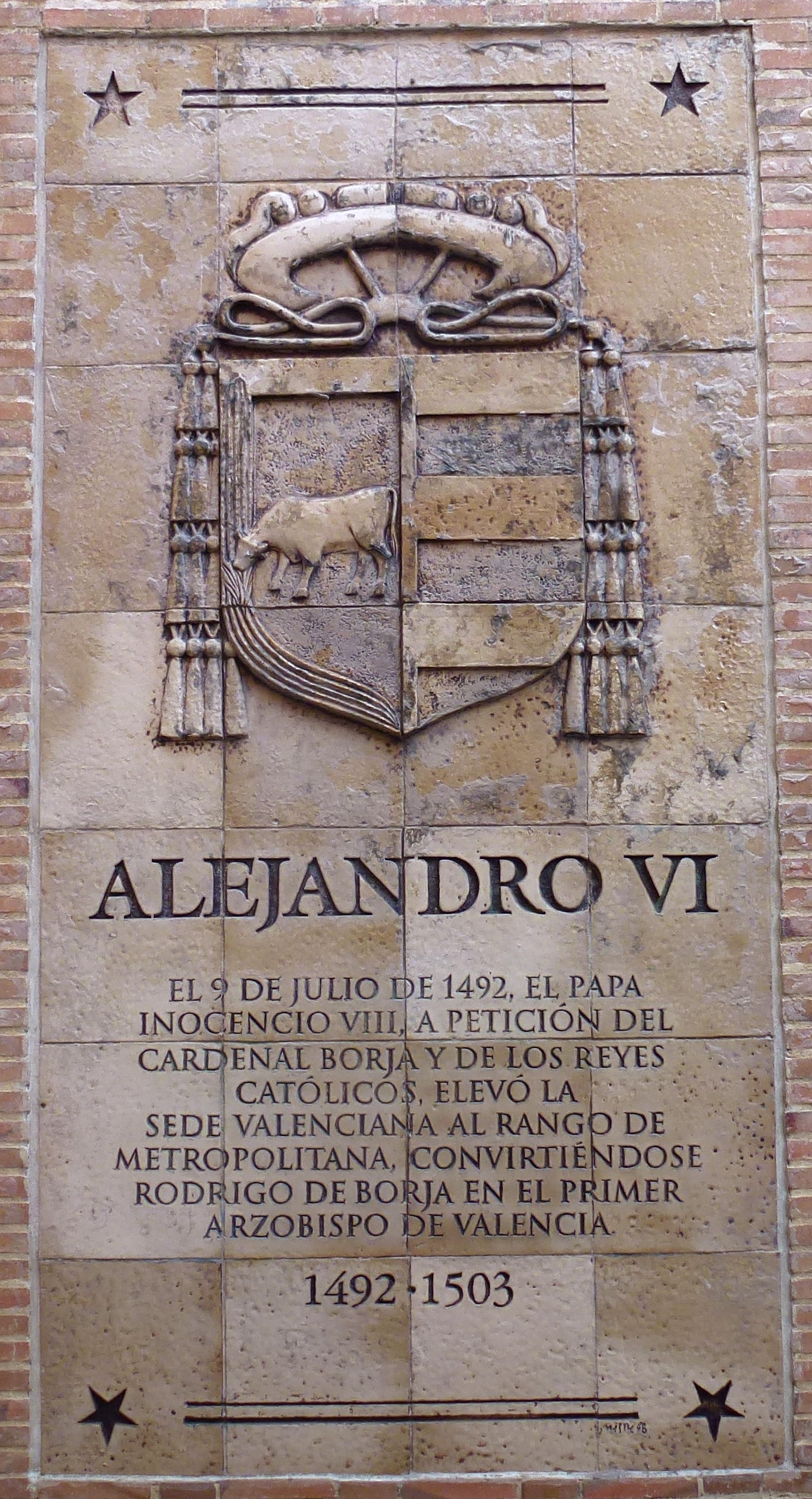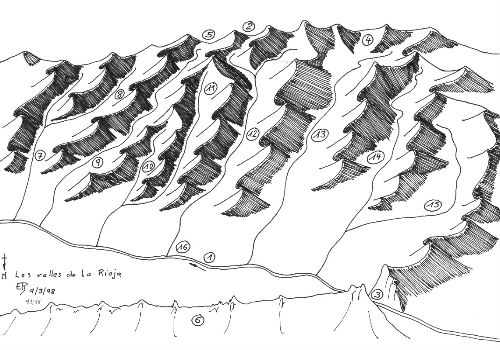|
Santa María La Real Of Nájera
Santa María la Real is a monastery in the small town of Nájera in the La Rioja (autonomous community), La Rioja community, Spain. Originally a royal foundation, it was ceded by Alfonso VI of Castile, Alfonso VI to the Cluny, Cluniac order. It was an important pilgrimage stop on the Camino de Santiago. It is particularly well known for the woodwork in the Choir (architecture), choir of the church. History The first construction on the site dates back to the 11th century. Santa Maria la Real and the attached royal pantheon (gods), pantheon were founded by King García Sánchez III of Navarre in 1052. It was later elevated to an Bishop, episcopal see and placed under Papal authority. In 1076 the kingdom of Navarre passed into the hands of Alfonso VI of León and Castile. The Mozarabic rite, Mozarabic Rite (sometimes called the Isidorean or Spanish Rite) was replaced with the Latin liturgical rites, Latin Rite. The Missal of Silos, a Mozarabic missal which is the oldest known ... [...More Info...] [...Related Items...] OR: [Wikipedia] [Google] [Baidu] |
Missal Of Silos
The ''Missal of Silos'' is the oldest known document on paper (as opposed to parchment) created in Europe; it dates to before 1080 AD. The manuscript was written on quarto; it comprises 157 folios, of which folios 1 to 37 are on paper and the rest are on parchment. Strictly speaking, it is not a missal: It has been described as a breviary-missal. It can also be described as a '' Liber Mysticus'' or '' Breviarum gothicum''. The missal is "''Codex 6''" held in the library of the Monastery of Santo Domingo de Silos near Burgos, Spain. While the codex is named after its long-term home in Silos, it was not made at the Silos monastery's scriptorium; it was made at the monastery of Santa María la Real of Nájera. The paper for the missal is believed to have been manufactured in Muslim-ruled territory (Al-Andalus), even though Nájera was in Christian territory at the time the document was created. The manuscript relates to the Mozarabic rite. This was suppressed in 1080 by Pope ... [...More Info...] [...Related Items...] OR: [Wikipedia] [Google] [Baidu] |
Ministry Of Culture (Spain)
The Ministry of Culture (MC) is the Spanish government departments, department of the Spanish government, Government of Spain responsible for the promotion, protection and dissemination of the Spanish Historical Heritage, Spanish historical heritage, List of museums in Spain, national museums, Spanish art, art, Books in Spain, books, reading and Spanish literature, literary creation, of Cinema of Spain, cinematographic and audiovisual activities and of national List of archives in Spain, archives and List of libraries in Spain, libraries. It is also responsible for the promotion and dissemination of Culture of Spain, culture in Spanish language, Spanish, as well as the promotion of cultural cooperation and, in coordination with the Ministry of Foreign Affairs, European Union and Cooperation (Spain), Ministry of Foreign Affairs, European Union and Cooperation, of international relations in the field of culture. The MCD is headed by the Culture Minister, a Council of Ministers (Spa ... [...More Info...] [...Related Items...] OR: [Wikipedia] [Google] [Baidu] |
National Monument (Spain)
The current legislation regarding historical monuments in Spain dates from 1985. However, ''Monumentos nacionales'' (to use the original term) were first designated in the nineteenth century. It was a fairly broad category for national heritage sites protecting, for example, the Alhambra. The overarching category for Spanish heritage sites is now ''Bien de Interés Cultural'' ("good of cultural interest"). . Now there are some 13,000 monuments registered by the |
Ecclesiastical Confiscations Of Mendizábal
{{Short pages monitor ... [...More Info...] [...Related Items...] OR: [Wikipedia] [Google] [Baidu] |
Pope Alexander VI
Pope Alexander VI (, , ; born Roderic Llançol i de Borja; epithet: ''Valentinus'' ("The Valencian"); – 18 August 1503) was head of the Catholic Church and ruler of the Papal States from 11 August 1492 until his death in 1503. Born into the prominent Borja family in Xàtiva in the Kingdom of Valencia under the Crown of Aragon, he was known as Roderic de Borja, and he is commonly referred to by the Italianized form as Rodrigo Borgia. He studied law at the University of Bologna. He was ordained deacon and made a cardinal in 1456 after the election of his uncle as Pope Callixtus III, and a year later he became vice-chancellor of the Catholic Church. He proceeded to serve in the Roman Curia under the next four popes, acquiring significant influence and wealth in the process. In 1492, Rodrigo was elected pope, taking the name Alexander VI. Alexander's papal bulls of 1493 confirmed or reconfirmed the rights of the Spanish crown in the New World following the finds of Christop ... [...More Info...] [...Related Items...] OR: [Wikipedia] [Google] [Baidu] |
Qur'an
The Quran, also romanized Qur'an or Koran, is the central religious text of Islam, believed by Muslims to be a revelation directly from God ('' Allāh''). It is organized in 114 chapters (, ) which consist of individual verses ('). Besides its religious significance, it is widely regarded as the finest work in Arabic literature, and has significantly influenced the Arabic language. It is the object of a modern field of academic research known as Quranic studies. Muslims believe the Quran was orally revealed by God to the final Islamic prophet Muhammad through the angel Gabriel incrementally over a period of some 23 years, beginning on the Laylat al-Qadr, when Muhammad was 40, and concluding in 632, the year of his death. Muslims regard the Quran as Muhammad's most important miracle, a proof of his prophethood, and the culmination of a series of divine messages starting with those revealed to the first Islamic prophet Adam, including the holy books of the Torah, Psalms, ... [...More Info...] [...Related Items...] OR: [Wikipedia] [Google] [Baidu] |
Arabic Language
Arabic (, , or , ) is a Central Semitic languages, Central Semitic language of the Afroasiatic languages, Afroasiatic language family spoken primarily in the Arab world. The International Organization for Standardization (ISO) assigns language codes to 32 varieties of Arabic, including its standard form of Literary Arabic, known as Modern Standard Arabic, which is derived from Classical Arabic. This distinction exists primarily among Western linguists; Arabic speakers themselves generally do not distinguish between Modern Standard Arabic and Classical Arabic, but rather refer to both as ( "the eloquent Arabic") or simply ' (). Arabic is the List of languages by the number of countries in which they are recognized as an official language, third most widespread official language after English and French, one of six official languages of the United Nations, and the Sacred language, liturgical language of Islam. Arabic is widely taught in schools and universities around the wo ... [...More Info...] [...Related Items...] OR: [Wikipedia] [Google] [Baidu] |
Peter The Venerable
Peter the Venerable ( – 25 December 1156), also known as Peter of Montboissier, was the abbot of the Benedictine abbey of Cluny. He has been honored as a saint though he was never canonized in the Middle Ages. Since in 1862 Pope Pius IX confirmed his historical cult, and the '' Martyrologium Romanum'', issued by the Holy See in 2004, regards him as a blessed. Life Born to Blessed Raingarde in Auvergne, Peter was "dedicated to God" at birth and given to the monastery at Sauxillanges of the Congregation of Cluny where he took his vows at age seventeen. By the age of twenty he gained a professorship and was appointed prior of the monastery of Vézelay, transferring later to the monastery at Domène. Success at Vézelay and Domène led to his election as abbot general of the order, aged thirty. After his predecessor, the abbot Pontius, had been deposed by the pope, Peter became a tireless reformer of the Cluniac order, in the face of criticism from other orders and promi ... [...More Info...] [...Related Items...] OR: [Wikipedia] [Google] [Baidu] |
Abbot Of Cluny
The Abbot of Cluny was the head of the powerful monastery of the Abbey of Cluny in medieval France France, officially the French Republic, is a country located primarily in Western Europe. Overseas France, Its overseas regions and territories include French Guiana in South America, Saint Pierre and Miquelon in the Atlantic Ocean#North Atlan .... The following is a list of occupants of the position. List of abbots References Catalogus abbatum Cluniacensium {{DEFAULTSORT:Cluny, Abbots of Cluniacs French abbots ... [...More Info...] [...Related Items...] OR: [Wikipedia] [Google] [Baidu] |
La Rioja (Spain)
La Rioja () is an autonomous community and province in Spain, in the north of the Iberian Peninsula. Its capital is Logroño. Other cities and towns in the province include Calahorra, Arnedo, Alfaro, Haro, Santo Domingo de la Calzada, and Nájera. It has an estimated population of 315,675 inhabitants (INE 2018), making it the least populated autonomous community of Spain. It covers part of the Ebro valley towards its north and the Iberian Range in the south. The community is a single province, so there is no provincial deputation, and it is organized into 174 municipalities. It borders the Basque Country (province of Álava) to the north, Navarre to the northeast, Aragón to the southeast ( province of Zaragoza), and Castilla y León to the west and south (provinces of Burgos and Soria). The area was once occupied by pre-Roman Berones, Pellendones and Vascones. After partial recapture from the Muslims in the early tenth century, the region became part of the Kingd ... [...More Info...] [...Related Items...] OR: [Wikipedia] [Google] [Baidu] |
Pyrenees
The Pyrenees are a mountain range straddling the border of France and Spain. They extend nearly from their union with the Cantabrian Mountains to Cap de Creus on the Mediterranean coast, reaching a maximum elevation of at the peak of Aneto. For the most part, the main crest forms a divide between Spain and France, with the microstate of Andorra sandwiched in between. Historically, the Crown of Aragon and the Kingdom of Navarre extended on both sides of the mountain range. Etymology In Greek mythology, Pyrene is a princess who gave her name to the Pyrenees. The Greek historian Herodotus says Pyrene is the name of a town in Celtic Europe. According to Silius Italicus, she was the virgin daughter of Bebryx, a king in Mediterranean Gaul by whom the hero Hercules was given hospitality during his quest to steal the cattle of Geryon during his famous Labours. Hercules, characteristically drunk and lustful, violates the sacred code of hospitality and rapes his host's ... [...More Info...] [...Related Items...] OR: [Wikipedia] [Google] [Baidu] |





